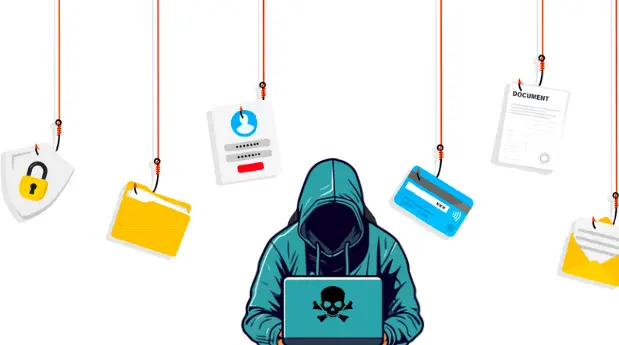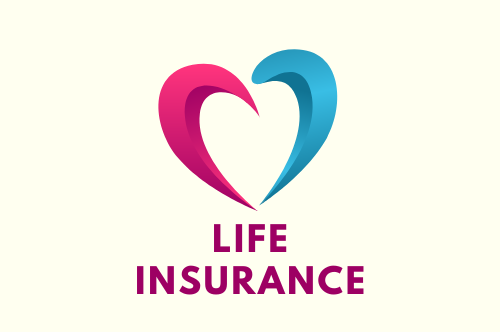Customers and insurers confront rampant life insurance fraud. Deception to get financial gains leads to substantial financial losses and legal penalties. This page has numerous parts and subheadings on life insurance fraud prevention.

Introduction
Deception to get unjust life insurance benefits is life insurance fraud. Policyholders, beneficiaries, insurance brokers, and others may commit fraud. In addition to insurance company losses, honest policyholders’ rates rise.
Life Insurance Fraud Types
1. Application Fraud
Application fraud is common in life insurance. Lying on insurance applications. Applicants may lie about lifestyle or pre-existing conditions to lower premiums. Applying for better premiums typically involves lying about age or identity. Dishonesty weakens underwriting and puts insurance companies at risk.
2. Alleges Fraud
Claims fraud involves policy benefit deceit. Common is claims fraud, such as making fake death claims for death benefits. Another kind is inflated claims, which are made to increase compensation. Fraudulent claims cost insurers and delay real claims, affecting policyholders.
3. Agent/Insider Fraud
Corporate insiders and insurance brokers can perpetrate fraud. One example is insurance churning when agents force policyholders to transfer plans for fees. Internal agents or employees embezzle premiums or claim settlements. Since insurance professionals are trusted, these insider frauds are harmful and hard to detect.
4. Preventing Life Insurance Fraud
Life insurance fraud costs insurers and policyholders a lot and affects industry confidence. Technology and tight processes are needed to fix this. Life insurance fraud prevention includes rigorous applicant screening, innovative data analytics, regular policy reviews, and collaboration and information sharing.
Checking applications thoroughly
Fraud prevention needs thorough application verification. Valid insurance depends on the quality and honesty of the application information.
Medical Checkups
Complete medical checks are the initial step in screening candidates. These checks disclose the applicant’s health and pre-existing conditions or lifestyle factors that may increase insurance risk. Reliable health data helps insurers set rates and terms.
Background checks
In addition to medical tests, background checks check identity, employment history, and money. These checks confirm the applicant’s identity and finances. Income and job stability verification lowers income deception.

Information Accuracy Matters
These processes ensure application information is accurate, reducing insurance fraud. Applying accurate data helps insurers make informed decisions and minimize fraud early.
Advanced Stats
Modern data analytics can detect and prevent fraud. Fraud prevention in the digital age needs massive data analysis and trend detection.
Predictive modeling
Historical statistical models predict fraud risk. Predictive algorithms can discover anomalous applications or claims by evaluating prior fraud and recognizing similar patterns. These algorithms focus on high-risk fraud to help insurers detect it.
Data Mining Methods
In vast databases, data mining finds hidden relationships and patterns, enhancing this approach. Application inconsistencies or frequent policy changes may warn insurers of fraud through data mining. Constant data analysis helps insurers spot new fraud tactics and avoid them.
Active fraud detection
These advanced analytical methods help insurers detect and prevent fraud. Data analytics helps insurers discover fraud, assess risk, and set prices.
Regular Policy Reviews
Policy reviews aid early detection of suspicious activities. Policy monitoring and auditing help detect fraud and questionable activity.
Audit Trails
This method involves extensive policy changes and transaction audit records. Audit trails document policy changes, including coverage, beneficiaries, and premiums. Insurers can spot fraud by looking for frequent or unusual changes.
Warning Signs
Another important option is red flag monitoring. If beneficiaries change often, several policies cover the same individual, or coverage levels rise unexpectedly, insurers may suspect fraud. Regularly evaluating these signs helps insurers respond fast, investigate questionable activity, and avoid fraud.
Proactive Measures
Active processes like policy reviews assist insurers in detecting fraud and preserving policy portfolio integrity.
Collaboration and Information Sharing
Database Sharing
By tracking fraud cases and suspects, shared databases help insurers discover emerging fraud tendencies. These databases help insurers discover fraud tendencies by combining data from several sources.
Industry-spanning partnerships
Law enforcement and banks work together to avoid fraud. This alliance helps coordinate fraud response by exchanging information and best practices. Financial institutions can spot suspicious transactions, while law enforcement can punish fraud.
Fighting Fraud Together
Collaboration against life insurance fraud makes system manipulation harder. Knowledge, resources, and approaches shared by insurers and stakeholders can enhance fraud prevention.
Tech Innovations for Fraud Prevention
AI and ML enhance insurance fraud detection. Automatic pattern recognition can identify fraud patterns and behaviors. AI-powered real-time monitoring can flag fraudulent transactions and claims for further investigation. These technologies reduce erroneous claims by improving fraud detection accuracy.
Blockchain technology
Blockchain makes insurance transactions secure and transparent. Immutable records prevent fraud by securing transactions and policy changes. Under certain situations, smart contracts can automate claim settlements without human intervention. Insurance businesses may increase security and integrity using blockchain.
Biometric Verification
Enhanced application and claims security with biometric verification. To prevent identity fraud, fingerprint, and facial recognition can verify policyholders and claims. These biometric technologies are difficult to falsify, ensuring only approved users may benefit from policies. Biometric verification reduces fraudulent claims.
Regulations and laws
Enhancing Law
Strong laws prevent life insurance fraud. Governments should penalize and imprison fraudsters. Enhancing regulatory bodies’ fraud investigation and prosecution powers is vital. Strong laws give the message that fraud is wrong and punished.
Mandatory Reporting
Insurers must disclose suspicious activities to regulators to prevent fraud. Transactions that surpass criteria or show unusual tendencies should need SARs. Employee whistleblower protections should also incentivize fraud disclosure without sanctions. These procedures speed up fraud investigation and resolution.
Policyholder education and awareness campaigns
Fraud prevention needs policyholder education on risks and penalties. Policyholders can learn about fraud prevention and techniques at seminars and workshops. Brochures, newsletters, and websites may highlight honesty and awareness. Educated policyholders report suspicious conduct more often, preventing fraud.
Communication Open
Transparency with policyholders lowers fraud and fosters trust. Clear insurance terms and conditions help policyholders understand coverage and obligations. Quick response to customer inquiries prevents misconceptions and fraud. Insurance and policyholders are more honest ethical and transparent.
Developing Comprehensive Anti-Fraud Programmes
To combat fraud, insurance companies must emphasize strong anti-fraud initiatives. These initiatives should be properly designed to avoid, detect, and combat fraud. Fraud detection units should support these initiatives. These specialist sections monitor transactions, detect fraud, and settle cases quickly.
Fraud detection units
Fraud detection units are needed to fight insurance fraud. These units need highly trained personnel who can recognize suspicious activities and understand fraud methods. These devices can detect fraud using advanced analytics. These units’ detection skills can be improved via claims and underwriting audits.
Employee Fraud-Detection Training
Anti-fraud programs require extensive personnel training. Insurance companies must train employees on new fraud detection tools and trends. The first line of protection against fraud is well-trained staff who can recognize signals and respond. Training should include common fraud tactics, detection software, and continuous monitoring.
Financial Integrity and Trust
Insurance companies can preserve their revenues and build policyholder trust with comprehensive anti-fraud operations. Fraudulent conduct can cost insurers, raise premiums, and tarnish their image. Proactive fraud prevention protects the company’s finances and improves its transparency. This builds consumer trust and loyalty.
Promoting Insurance Company Ethics
Besides technology, promoting ethics in the company helps prevent fraud. Insurance companies should establish a strict code of ethics for employees and agents. The code should promote honesty, integrity, and accountability in all organizational procedures.
Making and Enforcing an Ethics Code
A clear code of ethics guides employees’ ethical decisions. Provide workers and agents with the code and monitor and enforce it. Regular ethics teaching and consequences for unethical activity can enhance the code.
Setting Up Incentive Systems
Aligned incentive systems for ethical and anti-fraud compliance are also successful. Performance metrics and incentives should prioritize honesty above sales or claim processing. Paying anti-fraud employees can promote ethics in insurance companies.
Promoting Workplace Ethics
Leaders must commit to workplace ethics and set a tone, not merely legislation and training. Top management should be ethical. Open communication channels should let employees report unethical or fraudulent activity without penalty.
Deterring Fraud
Through ethical workplaces, insurance corporations may deter fraud. Employees with high ethics are less likely to commit or tolerate fraud. The company’s reputation may attract consumers, investors, and regulators with a strong ethical culture.
Protect Your Name
To succeed, insurance firms need strong reputations. Integrity and ethics may distinguish an insurer in a competitive market. Companies that stress ethics and fraud prevention will acquire consumer trust and loyalty.
Conclusion
Life insurance fraud prevention requires advanced technology, rigorous verification, legislation, and stakeholder participation. Following the tips in this article will help insurance companies reduce fraud, protect their finances, and provide fair pricing to honest consumers. Fighting fraud requires educating policyholders and fostering ethics and openness. Collaboration in life insurance may make the industry safer and more trustworthy.
POSTS YOU MAY LIKE:

